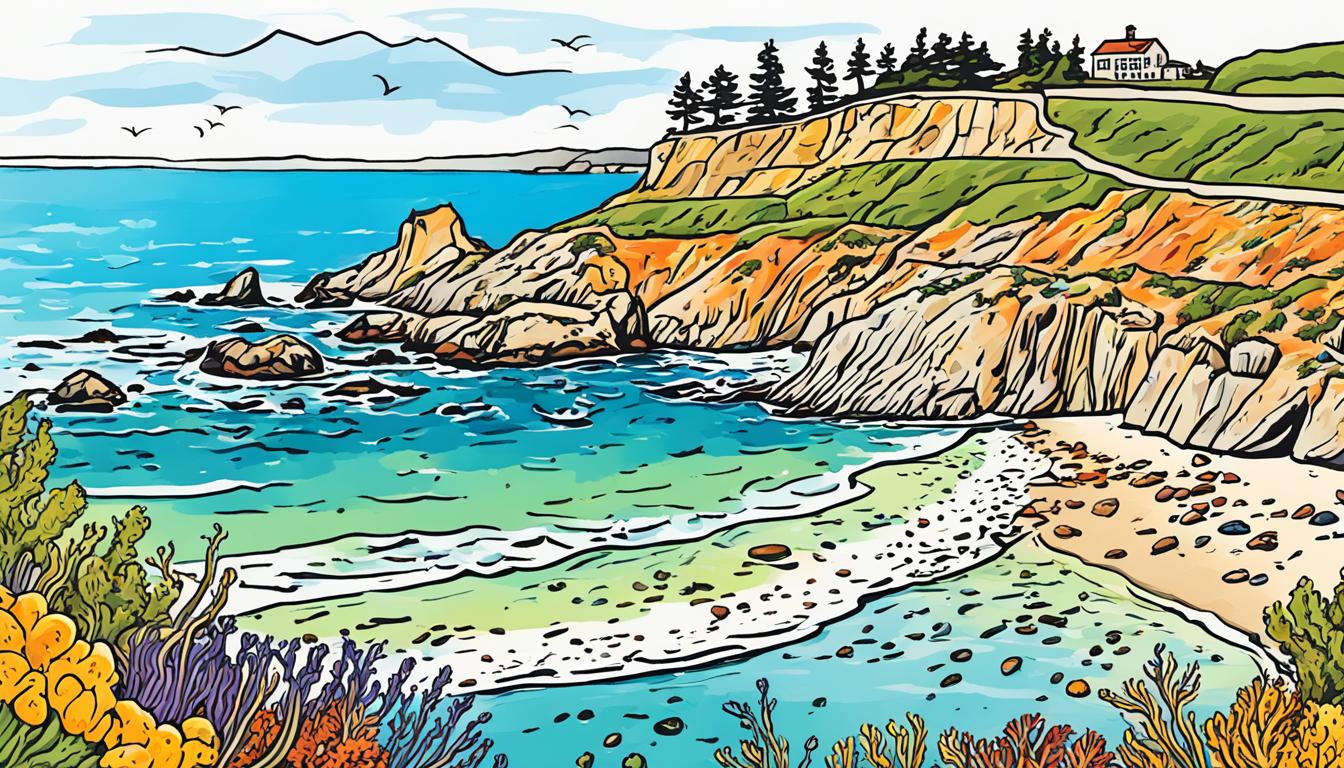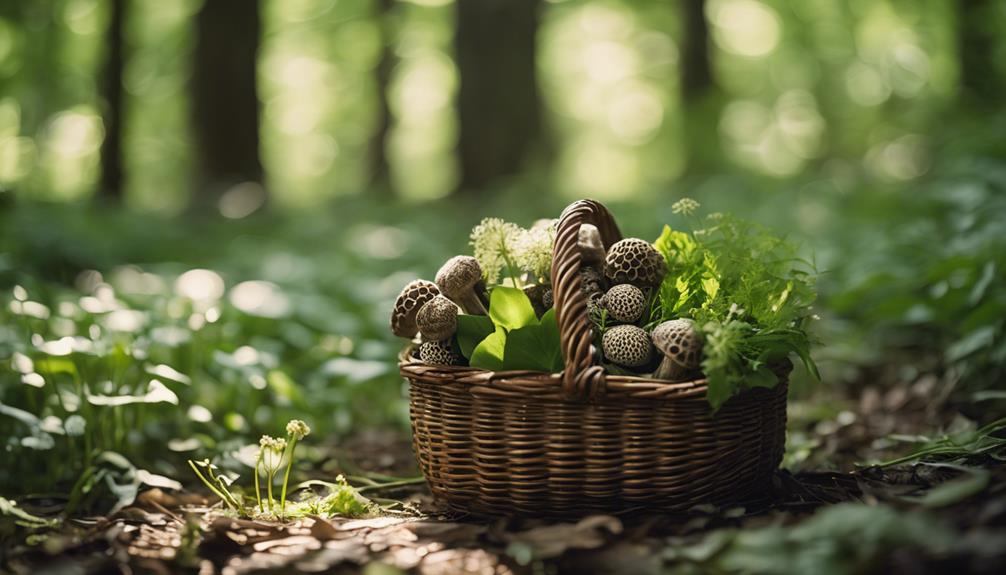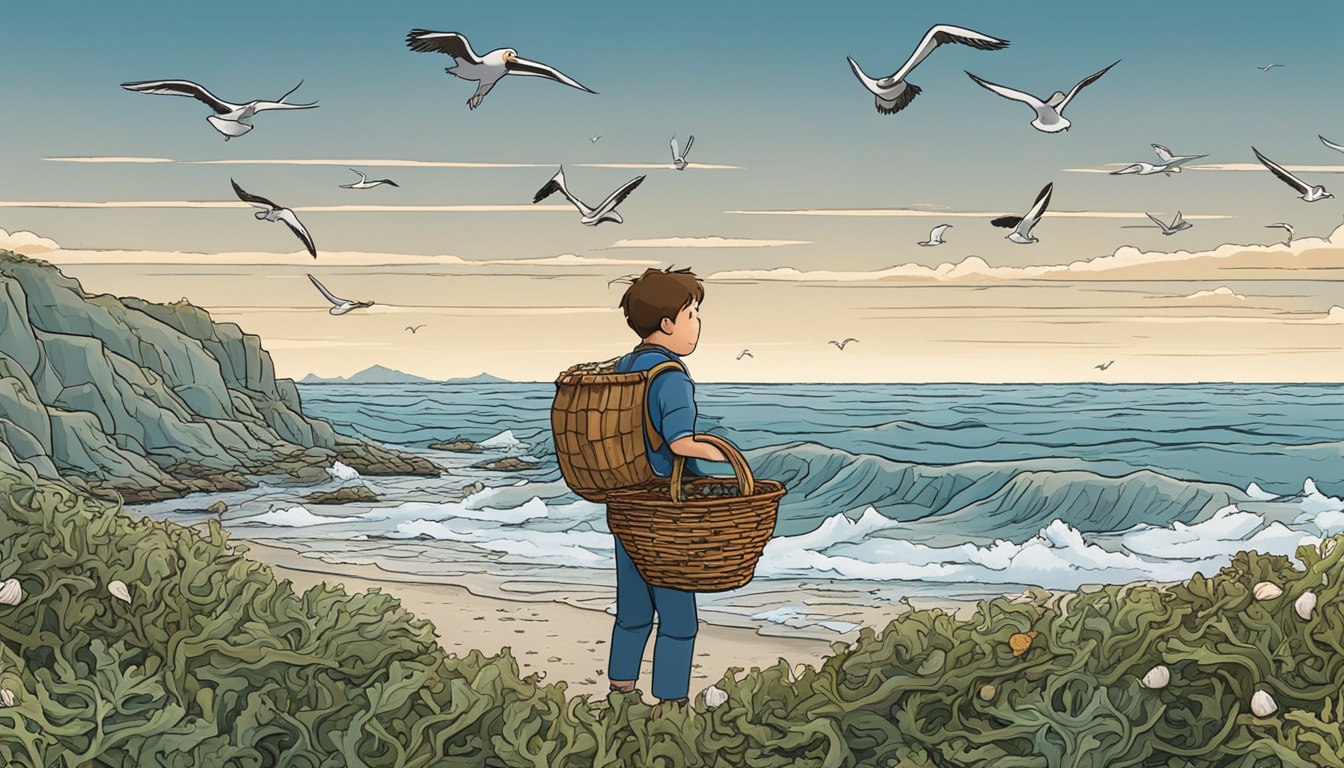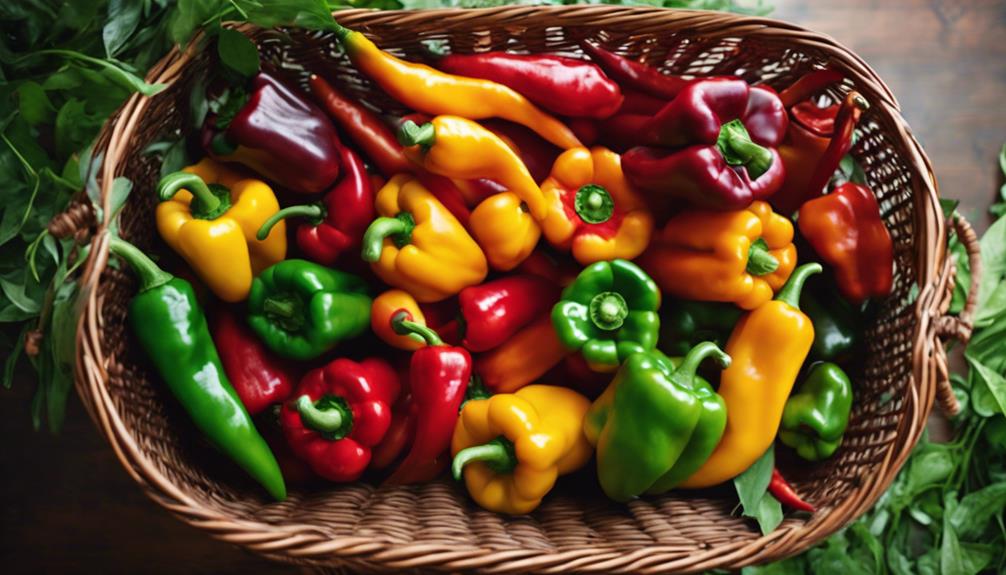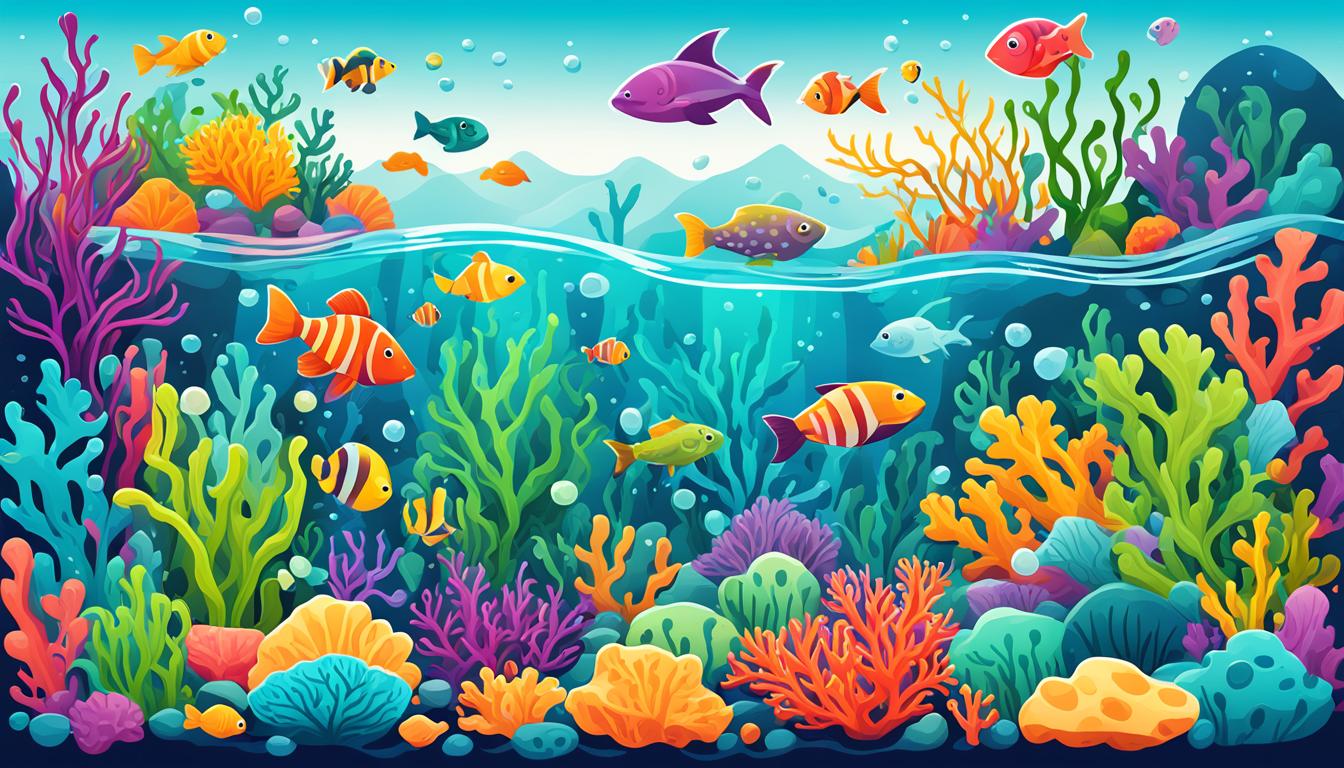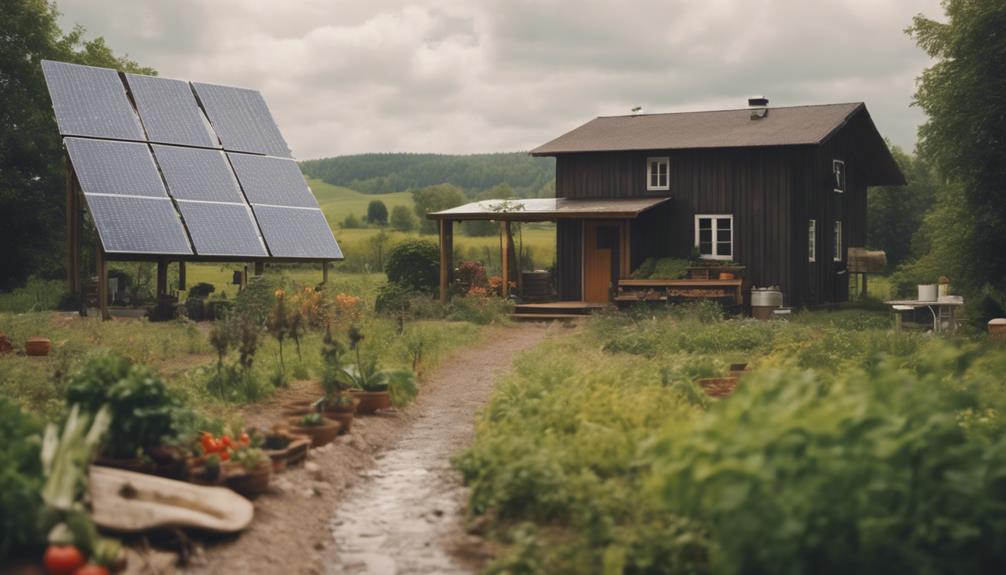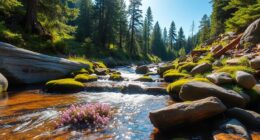Imagine strolling along the pristine shores of Cabrillo Beach in Southern California, feeling the gentle breeze and the warmth of the sun on your skin. As you wander, you can’t help but wonder about the secrets that lie beneath the glistening waves and hidden within the coastal landscape. Little do you know, this stretch of coastline holds a rich history and diverse ecosystems that offer a treasure trove of edible plants and sea delicacies for those who know where to look.
For thousands of years, ancient peoples have inhabited this region, leaving behind traces of their presence. Archaeological sites in the area reveal that humans began inhabiting the Tijuana River Estuary approximately 10,000 years ago during the Early Holocene period. Stone tools such as atlatls, scrapers, crescents, leaf-shaped points, and knives have been discovered, giving us a glimpse into the past and the practices of prehistoric coastal foraging.
As time passed, the landscape of Cabrillo Beach transformed. In the Middle Holocene period, around 8,000 to 1,300 years ago, the “Milling Stone” or “La Jolla” culture emerged, utilizing manos and metates for grinding seeds and acorns. The stabilization of sea levels around 3,500 years ago created a lagoon teeming with shellfish and fish, leading to a rise in the human population.
Fast forward to 1,300 years ago, the Late Holocene period, when the Kumeyaay people thrived along the coastal region around the Tijuana River Estuary. Their intimate knowledge of the land and their sustainable practices allowed them to utilize a wide range of local resources for food, medicine, and shelter.
However, the arrival of Spanish explorers, including Juan Rodriguez Cabrillo, in the mid-sixteenth century brought significant changes to the native way of life. Spanish colonial rule transformed the landscape and traditions, leaving a lasting impact on the coastal communities.
Today, coastal foraging at Cabrillo Beach presents an opportunity to connect with nature and partake in the age-old practice of gathering food from the land and sea. Exploring the edible plants and uncovering the abundant marine life is not only a feast for the senses but also a way to honor the legacy of those who came before us.
Key Takeaways:
- Coastal foraging at Cabrillo Beach allows you to uncover the ocean’s bounty and connect with nature.
- The region has a rich history of human habitation, with evidence dating back thousands of years.
- The practices of prehistoric coastal foraging can be glimpsed through archaeological sites and the discovery of stone tools.
- The Kumeyaay people thrived in this coastal region, utilizing their sustainable practices to sustain their communities.
- Spanish colonial rule had a significant impact on the area, transforming the indigenous way of life.
The Rich History of Cabrillo Beach
Approximately 76 million years ago, the Point Loma Peninsula was formed beneath the Pacific Ocean, giving rise to the sedimentary geologic formation known as the Point Loma Formation. This geological marvel set the stage for the rich history of Cabrillo Beach in Southern California.
The Kumeyaay people, San Diego’s native inhabitants, have called this region home for thousands of years. With a lineage dating back to the Late Pleistocene era, it is believed that Homo sapiens may have arrived here as early as 40,000 years ago. The Kumeyaay have a deep connection to the land, traditionally engaging in coastal foraging and utilizing the abundant coastal animals and plants for sustenance and jewelry.
As time progressed, Cabrillo Beach witnessed the arrival of European explorers. Juan Rodriguez Cabrillo, the first European to land in the area in September 1542, left a lasting legacy. In October 1913, Cabrillo National Monument was established to honor his historic arrival and protect the coastal beauty and heritage of the area.
The landscape of Cabrillo Beach has seen notable changes over time. The Old Point Loma Lighthouse, situated at a towering height of 422 feet above sea level, was selected as an ideal spot for a lighthouse in 1851 but was eventually decommissioned in 1891 due to fog and cloud cover. The establishment of Fort Rosecrans on Point Loma provided crucial coastal defense during World Wars I and II, highlighting the strategic significance of this location.
Today, the Cabrillo State Marine Reserve safeguards the habitat for over 200 species of migrant and resident birds, including brown pelicans, black oystercatchers, cormorants, and terns. This sanctuary’s coordinates are meticulously defined under the California Code of Regulations, emphasizing its importance in preserving the region’s natural treasures.
Delving into the rich history of Cabrillo Beach unveils a tapestry woven with the footsteps of ancient peoples, European explorers, and the natural forces that have shaped this coastal haven. From the Prehistoric Period to the present, Cabrillo Beach continues to captivate visitors with its diverse cultural heritage and breathtaking natural beauty.
To get a glimpse of the stunning history and natural wonders of Cabrillo Beach, take an immersive journey through the San Diego Museum of Man’s exhibits or embark on a guided tour of the Cabrillo National Monument. With each step, you’ll uncover the stories of the Kumeyaay people, the triumphs and challenges faced by early settlers, and the timeless allure of this coastal gem.
The Early Inhabitants: Kumeyaay People
The Kumeyaay people have inhabited what is now San Diego County for thousands of years, traditionally harvesting coastal animals and plants for food and jewelry.
| Key Facts | Details |
|---|---|
| Estimated Age of Human Settlement | Approximately 40,000 years ago |
| Main Activities | Coastal foraging for food and resources |
| Important Figures | Delphina Cuero – A Kumeyaay woman whose account provides valuable insights into the utilization of coastal resources |
| Legacy | The Kumeyaay people’s deep connection to the land has shaped the cultural traditions and preservation efforts in San Diego County |
The Kumeyaay people, with their intimate knowledge of the coastal ecosystems, developed refined techniques for coastal foraging. They relied on a sustainable approach, carefully managing their resources, including fishing, abalone hunting, clam digging, and plant gathering near the sea. This harmonious relationship with the environment ensured their survival and left a lasting legacy in the cultural history of San Diego.
The Changing Landscape of Cabrillo Beach
Over the course of thousands of years, the landscape of Cabrillo Beach has undergone significant changes due to climate change and sea level rise. These environmental factors have played a crucial role in shaping the coastal area into what it is today.
Approximately 10,000 years ago, as the polar ice melted and sea levels rose, the once-landlocked estuary transformed into a bay. This transformation created new opportunities for early human settlers to gather plants, fish, and collect other food resources from the abundant kelp beds and marine ecosystems. The coastal area between the mean high tide line and designated coordinates is now protected under California Code of Regulations Title 14, Section 632(b)(146) to safeguard its unique features.
This shift in the landscape has not only affected the physical geography but has also influenced the cultural history of the area. The Kumeyaay people, who have lived in what is now San Diego County for thousands of years, relied on marine and coastal resources as a crucial part of their livelihood. The changing landscape and the abundance of marine life in the bay provided the Kumeyaay people with sustenance and a connection to their environment.
Today, Cabrillo Beach remains a testament to the ever-evolving nature of our planet. As sea levels continue to rise due to climate change, coastal communities face increasing threats such as coastal flooding, erosion, and the destabilization of coastline infrastructure. It is crucial to acknowledge and address these challenges to ensure the long-term sustainability and preservation of places like Cabrillo Beach for future generations.
Protecting Cabrillo Beach for the Future
The protection and preservation of Cabrillo Beach are of utmost importance. Researchers and scientists, such as Professor Ian Walker and the USC Sea Grant-funded projects, are working on understanding the impact of climate change and sea level rise on coastal ecosystems.
By studying sand dunes, cobble dynamics, and implementing living shoreline approaches, experts aim to develop strategies that can mitigate the effects of sea level rise and preserve the natural beauty and biodiversity of Cabrillo Beach. Additionally, efforts to raise awareness about light pollution and its impacts on sensitive species are crucial to maintaining a healthy and balanced ecosystem along the Southern California coast.
It is our collective responsibility to take actions that protect and preserve habitats like Cabrillo Beach, ensuring that they remain thriving ecosystems that support diverse plant and animal life. By understanding and appreciating the changing landscape, we can work towards sustainable solutions that safeguard our natural resources for generations to come.

The Practices of Prehistoric Coastal Foraging
Prehistoric peoples in the Cabrillo Beach area refined their coastal foraging techniques over time. Their survival and sustenance depended on a delicate balance of fishing, hunting, gathering plants, and utilizing stone tools.
Archaeological sites in the region have provided valuable insights into the tools and strategies used by these early inhabitants. The San Dieguito Complex, dating back 7,000 to 12,000 years, marks the earliest prehistoric culture in Southern California.
Fishing and Hunting
Fishing played a crucial role in the coastal foraging practices of prehistoric communities. They developed innovative methods, including the use of nets, hooks, and spears, to catch a variety of marine species. The Lake Mohave people, who arrived in the San Diego area between 8,500 and 10,000 years ago, adapted their fishing techniques to changing climate conditions.
Alongside fishing, hunting was another essential aspect of coastal foraging. Early inhabitants utilized stone tools, such as spear points and knives, to pursue large prey. Dart and knife point types like the Pinto and Little Lake Series date back at least 9,300 years, showcasing the sophistication of their hunting practices.
Gathering Plants and Utilizing Stone Tools
Coastal foragers also relied on gathering edible plants to supplement their diet. The abundance of plant species in the Cabrillo Beach area provided a rich source of nutrition. Prehistoric people gathered plants such as berries, nuts, and roots, using their extensive knowledge of local flora for sustenance.
Stone tools played a vital role in the coastal foraging practices of early inhabitants. Archaeological findings have revealed the presence of various tools, including atlatls (spear-throwing devices), scrapers, points, and knives. These tools enabled efficient navigation of the coastal environment and the exploitation of its resources.
“The use of stone tools allowed prehistoric coastal foragers to master their environment, ensuring their survival and providing sustenance for their communities.”
Through meticulous analysis of projectile point artifacts from archaeological sites like the Point Loma Peninsula, researchers can gain a deeper understanding of the influence of the Lake Mohave Complex on San Dieguito styles.
The practices of prehistoric coastal foraging evolved over time, reflecting both the changing environment and the ingenuity of early human communities. Fishing, hunting, gathering plants, and utilizing stone tools were essential components of their lifeways, providing them with the means to thrive in the coastal ecosystems of Cabrillo Beach.
| Site Types | Installation |
|---|---|
| San Nicolas Island | Table 6 |
| San Clemente Island | |
| Camp Pendleton |
Table 6 provides further information on the site types by installation on San Nicolas Island, San Clemente Island, and Camp Pendleton.
The Lifeways of the Kumeyaay People
The Kumeyaay people, particularly the Tipai branch, have thrived along the coast near Cabrillo Beach for centuries. They have preserved their native traditions, relying on a combination of hunting, gathering, and fishing to sustain their communities.
The Kumeyaay developed ingenious techniques to capture game and harvest marine resources. They used nets, traps, and controlled fires, demonstrating their deep understanding of the land and its resources.
Through their expert knowledge, the Kumeyaay utilized a wide range of local resources for food, medicine, and shelter. They cultivated a harmonious relationship with the coastal environment, practicing sustainable methods of hunting and gathering.
The Art of Hunting and Gathering
Hunting played a crucial role in the Kumeyaay’s lifeways. Their expertise in hunting allowed them to efficiently capture game animals such as deer, rabbits, and birds. They used various tools, such as bows and arrows, to ensure a successful hunt.
Gathering was equally essential to their survival. The Kumeyaay collected a vast array of edible plants like acorns, berries, and seeds. They possessed intricate knowledge of the seasons and plant cycles, ensuring they gathered resources at their prime.
“The Kumeyaay people have thrived for centuries by utilizing their hunting and gathering skills, respecting the land and its resources.”
Preservation of Cultural Traditions
The Kumeyaay’s native traditions, including their hunting and gathering practices, are deeply intertwined with their cultural identity. These traditions have been passed down through generations, reinforcing the importance of living in harmony with nature and respecting the environment.
Despite external influences and changes over time, the Kumeyaay have remained steadfast in their connection to their ancestral lifeways. Their profound understanding of the land and its resources serves as a testament to the resilience and wisdom of the Kumeyaay people.
Documenting the Kumeyaay Lifeways
The Kumeyaay traditional lifeways have been documented by various researchers, historians, and authors. Ruth Almstedt’s “Diegueño Curing Practices” provides valuable insights into the medicinal practices of the Kumeyaay, while “The Kumeyaay: Secrets of the Trail” by Candy Anderson, Diana Caldeira, and Roberta Labastida delves into their cultural heritage.
Other scholarly works, such as Florence Shipek’s article on Kumeyaay plant husbandry and Alexandra von Barsewisch’s book “Kumeyaay Courses Astride La Línea,” shed light on the Kumeyaay people’s deep connection to their environment and their sustainable practices.
Exploring Traditional Knowledge
Accessing these resources at libraries like San Diego State University Library, University of California, San Diego, and others allows individuals to explore the rich cultural heritage and traditional knowledge of the Kumeyaay people. It offers an opportunity to deepen our understanding of their lifeways and the importance of sustainable practices.
| Publication | Availability |
|---|---|
| “The Kumeyaay: Secrets of the Trail” by Candy Anderson, Diana Caldeira, and Roberta Labastida | San Diego State University Library |
| “Diegueño Curing Practices” by Ruth Almstedt | San Diego State University Library, University of California, San Diego |
| “Kumeyaay Courses Astride La Línea” by Alexandra von Barsewisch | University of California, Los Angeles and Stanford University Libraries |

By exploring the lifeways of the Kumeyaay people and respecting their traditional knowledge, we can gain a deeper appreciation for their sustainable practices and the interconnectedness between humans and nature.
Spanish Influence on Cabrillo Beach
In the mid-sixteenth century, Spanish explorers set foot in the region surrounding Cabrillo Beach, leaving an indelible mark on its history. One of the notable explorers was Juan Rodriguez Cabrillo, a Spanish conquistador. Cabrillo’s arrival marked the beginning of significant changes in the local landscape and the introduction of European colonization.
The impact of Spanish influence on coastal foraging practices and the indigenous way of life in the Cabrillo Beach area cannot be understated. The arrival of the Spanish brought forth a period of cultural transformation and profound shifts in the social, economic, and ecological fabric of the region.
The Spanish explorers, driven by aspirations of wealth and power, sought to establish trade routes and expand their empire. They introduced new agricultural practices, brought livestock and introduced European crops to the land. This influenced the traditional way of life of the indigenous people and altered the ecological dynamics of the region.
The Spanish also introduced new technologies and techniques to the native populations, including more efficient tools for farming, fishing, and gathering. Through the process of colonization, the Spanish explorers brought about changes in the patterns of settlement, land use, and resource exploitation.
“The arrival of the Spanish explorers had a profound impact on the local communities, reshaping their cultural practices and introducing new ways of living.”
Despite the changes brought by the Spanish, the indigenous peoples of the region, including the Kumeyaay, adapted and preserved their cultural heritage. Over time, a unique blend of Spanish and indigenous traditions emerged, creating a distinct cultural identity that persists to this day.
Today, the Spanish influence is still visible in the architecture, language, and customs of the Cabrillo Beach area. The rich history and cultural heritage are a testament to the enduring legacy of Spanish exploration and colonization.
As you explore the coastal wonders of Cabrillo Beach, take a moment to reflect on the complex history that has shaped the region. The Spanish explorers, led by figures like Juan Rodriguez Cabrillo, left an indelible mark, forever intertwining their story with the pristine beauty of this coastal paradise.

The Abundance of Marine Life at Cabrillo Beach
The waters surrounding Cabrillo Beach are a thriving ecosystem for marine invertebrates, fish, and shellfish. It’s like a culinary playground for coastal foragers, offering a diverse selection of edible treasures.
Imagine casting your gaze into the crystal-clear waters and witnessing the dance of marine invertebrates. From colorful sea anemones to delicate sea stars, these fascinating creatures not only add beauty to the underwater landscape but also hold culinary potential. Crustaceans, mollusks, and echinoderms are among the most abundant invertebrate species in the harbor, providing a variety of flavors and textures for adventurous palates. As important contributors to marine ecosystems and biodiversity, these invertebrates help maintain the health and balance of their aquatic habitats. Their presence supports a complex web of life, offering essential nutrients for predators and playing key roles in nutrient cycling. By appreciating both their ecological significance and their potential on our plates, we gain a deeper understanding of the vital interconnectedness within the marine world.
The fish population in these waters is equally impressive. Over 1,000 different species of fish call San Pedro Bay home, and Cabrillo Beach is no exception. The study conducted in the area documented 104 fish species, including the Northern anchovy, white croaker, and topsmelt as prevalent catches. Whether you’re a fan of flaky white fish or prefer the robust flavors of oily fish, there’s something for every seafood lover to enjoy.
When it comes to shellfish, Cabrillo Beach is a treasure trove of delicacies. From succulent clams to meaty crabs, there’s no shortage of options to satisfy your cravings. Delicate oysters and flavorful mussels are also abundant, offering the perfect balance of taste and texture. Coastal foragers can explore the tide pools and rocky shores to discover these hidden culinary gems.

The marine life in Cabrillo Beach is not only a source of culinary delight but also plays a crucial role in maintaining the balance of the local ecosystem. The eelgrass beds spanning 86 acres in the outer harbor provide a nurturing habitat for small fish and invertebrates while also serving as an important foraging ground for birds. Kelp forests covering 118 acres along breakwaters and jetties offer shelter and sustenance to numerous marine species.
As you explore the wonders of Cabrillo Beach, keep in mind the significance of sustainable foraging practices. Enjoy the abundance of marine invertebrates, fish, and shellfish responsibly, ensuring the preservation of this precious ecosystem for future generations of coastal foragers.
| Statistics | Details |
|---|---|
| Number of Fish Species | 104 |
| Number of Invertebrate Species | 859 |
| Eelgrass Beds | 86 acres |
| Kelp Forests | 118 acres |
Exploring the Edible Plants of Cabrillo Beach
When it comes to coastal foraging at Cabrillo Beach, the focus is often on the abundant marine life that thrives along the shoreline. However, in addition to the diverse array of fish, shellfish, and other edible treasures found in the waters, Cabrillo Beach is also home to various edible plants that add another dimension to the coastal foraging experience.
Coastal foragers exploring the vegetation at Cabrillo Beach can discover a variety of plant species that have traditionally been used by indigenous people for both food and medicine. Among the edible plants commonly found in the area are sagebrush, buckwheat, and various types of grasses.
Sagebrush (scientific name: Artemisia californica) is a fragrant plant with gray-green leaves that has long been valued for its culinary and medicinal properties. The leaves of sagebrush can be used to add flavor to dishes, while its medicinal uses range from treating sore throats to relieving digestive issues.
Buckwheat (scientific name: Eriogonum fasciculatum) is another edible plant that can be found at Cabrillo Beach. The seeds of buckwheat can be ground into flour and used to make a variety of baked goods. It is also a good source of fiber and several essential nutrients.
Grasses, such as sea bentgrass and purple needlegrass, can also be foraged along the coast. These grasses have been used by indigenous people for various purposes, including making baskets and mats.
Exploring the edible plants of Cabrillo Beach not only provides an opportunity to expand your knowledge of coastal foraging but also allows you to connect with the rich cultural history of the indigenous people who once thrived in this area.
Remember, when foraging for edible plants, it is important to have a good understanding of plant identification and sustainable harvesting practices. Always ensure that you are foraging in areas where it is legally permitted and be respectful of the environment by only taking what you need.
So, the next time you embark on a coastal foraging adventure at Cabrillo Beach, take the time to explore the edible plants that grow along the coast. Who knows, you might just discover a new favorite ingredient or gain a deeper appreciation for the natural bounty that surrounds us.

| Edible Plants | Description |
|---|---|
| Sagebrush | A fragrant plant with gray-green leaves traditionally used for culinary and medicinal purposes. |
| Buckwheat | A plant whose seeds can be ground into flour and used in baking. It is also a good source of fiber and nutrients. |
| Grasses | Various grass species, such as sea bentgrass and purple needlegrass, have been used for making baskets and mats. |
Techniques and Tips for Coastal Foraging at Cabrillo Beach
Coastal foraging at Cabrillo Beach is a rewarding and exciting activity that allows you to connect with nature and explore the abundance of edible treasures along the shoreline. To make the most out of your coastal foraging adventure, it’s essential to have a good understanding of the techniques and tips that can enhance your experience and ensure your safety.
One of the first steps in coastal foraging is to familiarize yourself with the local flora and fauna. Having a coastal foraging guide or expert can greatly enhance your knowledge and help you identify edible plants and sea creatures. They can provide valuable insights into the best spots for coastal foraging and offer tips on sustainable harvesting methods.
When it comes to coastal foraging techniques, it’s important to understand the tides and currents. Timing your foraging trips during low tide can expose a greater variety of edible plants and shellfish. As the tide recedes, it unveils hidden treasures along the rocks and tide pools, providing an opportunity to discover delicacies such as mussels, clams, and ghost shrimp.
Harvesting mussels is a popular coastal foraging activity in Cabrillo Beach. It’s important to note that California has regulations in place to protect its marine resources. Foragers are limited to 10 pounds of mussels (shells and all) each trip, and a fishing license is required for harvesting mussels. It is recommended to harvest mussels during the winter season, as this is when they are at their peak flavor and abundance.
Additionally, it’s crucial to stay informed about any safety advisories related to shellfish consumption. California implements an annual quarantine from May 1 to Oct. 31 due to red tide, which can lead to the presence of toxins in shellfish. To stay updated on shellfish safety, contact the California Department of Public Health’s Marine Biotoxin Program.

Coastal foraging at Cabrillo Beach offers a unique opportunity to learn from experts and explore the ocean’s bounty firsthand. Kirk Lombard, the founder of Sea Forager Seafood and author of “The Sea Forager’s Guide to the Northern California Coast,” provides practical instructions and emphasizes following all regulations and sustainable practices. His book combines knowledge with humor and storytelling, making it an empowering resource for an epicurean adventure.
Whether you’re a beginner or an experienced forager, coastal foraging at Cabrillo Beach is a fascinating and enriching experience. By honing your techniques, understanding the local regulations, and embracing sustainable practices, you can make your coastal foraging trips memorable, safe, and environmentally conscious.
Conclusion
Coastal foraging at Cabrillo Beach in Southern California offers a unique opportunity to connect with nature and discover the ocean’s bounty. The rich history of human habitation in the area, coupled with the diverse marine and plant ecosystems, make Cabrillo Beach an ideal location for coastal foragers.
By engaging in coastal foraging, you can experience the tradition and cultural significance of this practice while exploring the abundance of edible plants and marine life that the beach has to offer. The statistical data from the report “Coastal Foraging Cabrillo Beach: Unveil Ocean’s Bounty” emphasizes the importance of sustainable practices and the need to protect the coastal environment.
Plan your coastal foraging trip to Cabrillo Beach today and unlock the secrets of the shoreline. Gain a deeper appreciation for the land, its resources, and the ecological wealth it provides. Whether it’s discovering edible plants or unearthing marine treasures, coastal foraging at Cabrillo Beach promises a memorable and rewarding experience.
FAQ
What is coastal foraging?
Where is Cabrillo Beach located?
What are the best spots for coastal foraging at Cabrillo Beach?
What are some edible plants that can be found at Cabrillo Beach?
How do I identify edible plants while coastal foraging at Cabrillo Beach?
What are some coastal foraging techniques I should know before visiting Cabrillo Beach?
Can I find marine life for foraging at Cabrillo Beach?
How can I ensure the safety of coastal foraging at Cabrillo Beach?
Can I still coastal forage at Cabrillo Beach if I am not an experienced forager?
Is coastal foraging at Cabrillo Beach a popular activity?
Source Links
- http://trnerr.org/wp-content/uploads/2010/12/hs_curriculum_HISTORY-chapter.pdf
- https://www.berghahnbooks.com/downloads/intros/MenikettiLong_intro.pdf
- https://wildlife.ca.gov/Conservation/Marine/MPAs/Cabrillo
- https://www.nps.gov/parkhistory/online_books/cabr4/chap2c.htm
- https://www.waterboards.ca.gov/water_issues/programs/beaches/cbi_projects/docs/summaries/007_portofla_ cab.pdf
- https://dornsife.usc.edu/uscseagrant/2020/08/30/for-the-love-of-the-beach/
- https://lookout.co/mussels-guide-to-foraging-for-mussels-santa-cruz-county/
- https://www.californiaprehistory.com/_tljones/AQ72(3)-5.Jones.pdf
- https://www.denix.osd.mil/cr/denix-files/sites/19/2016/03/01_A-Programmatic-Approach-to-Determine-Eligibility-of-Prehistoric-Sites-in.pdf
- https://soap.sdsu.edu/Volume1/LakeCahuilla/cahuilla.htm
- https://escholarship.org/content/qt2kr7g90x/qt2kr7g90x.pdf
- https://viejasbandofkumeyaay.org/viejas-community/kumeyaay-history/annotated-bibliography/
- https://marinasailing.com/Harbors/Harbors/RouteToInfoPage?HTMLPage=Info_TheChannelIslands
- https://www.portoflosangeles.org/references/2021-news-releases/news_042221_biodiversity
- https://laharborhabitats.org/cabrillo-marinas-and-beach/
- https://www.nps.gov/cabr/learn/intertidal-field-guide.htm
- https://lookout.co/mussels-guide-to-foraging-for-mussels-santa-cruz-county
- https://www.coastsidebuzz.com/kirk-lombard-of-sea-forager-takes-us-on-a-seafood-adventure
- https://calcofi.com/publications/calcofireports/v60/Vol60-Robinette.pdf
- https://beachapedia.org/State_of_the_Beach/State_Reports/CA/Beach_Ecology

